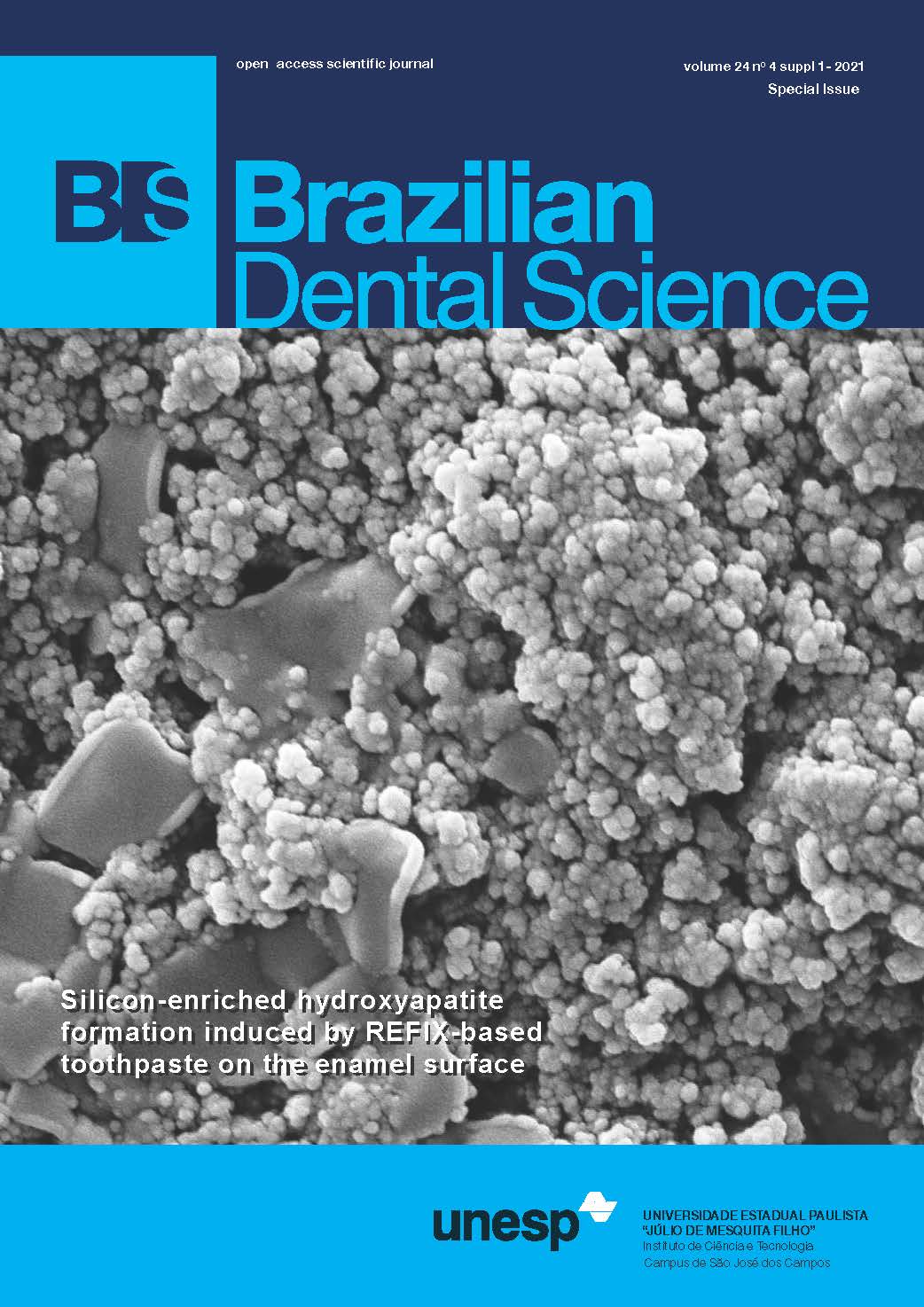Assessing the Level and Diagnostic Accuracy of Osteopontin and Oral Health Status in Periodontitis Patients with/without Type-2 Diabetes Mellitus
DOI:
https://doi.org/10.4322/bds.2021.e2968Resumo
Objective: Periodontitis is a multifactorial inflammatory disease usually terminated with tooth loss when untreated. Type-2 diabetes mellitus (T2DM) have shown to exacerbate periodontitis. Osteopontin, is thought to play a role to induce periodontitis-associated bone resorption. Aim was to investigate the osteopontin level in gingival crevicular fluid of patients affected by periodontitis with or without T2DM, and to explore the potential of osteopontin to differentiate between periodontal health and disease. Patients and Methods: A total number of 36 subjects seeking periodontal treatment were recruited in this pilot study. Plaque index, gingival index and probing pocket depth were examined, and the osteopontin level was measured in the GCF and analysed using Enzyme-linked immunosorbent assay. Results: Plaque index and gingival index were significantly higher in T2DM with periodontitis compared to periodontitis and control groups. Both periodontitis groups showed significant increase in the osteopontin levels (p<0.001) compared to control. probing pocket depth showed the only significant positive association with osteopontin (p<0.001) compared to other clinical parameters. The ROC curve analysis showed that osteopontin had higher AUC value (AUC: 0.95) in periodontitis compared to P-T2DM patients (AUC: 0.86). Conclusions: In both periodontitis groups, clinical parameters were equally deteriorated together with significant increase in the expression of osteopontin compared to control. Further, GCF-levels of osteopontin were sensitive and specific enough to discriminate between health and periodontitis even with T2DM. This could have an impact on osteopontin to be used as a diagnostic biomarker of periodontal disease.
Downloads
Downloads
Publicado
Versões
- 2022-01-03 (2)
- 2022-01-03 (1)
Como Citar
Edição
Seção
Licença
TRANSFERÊNCIA DE DIREITOS AUTORAIS E DECLARAÇÃO DE RESPONSABILIDADE
Toda a propriedade de direitos autorais do artigo "____________________________________________________________________" é transferido do autor(es) para a CIÊNCIA ODONTOLÓGICA BRASILEIRA, no caso do trabalho ser publicado. O artigo não foi publicado em outro lugar e não foi submetido simultaneamente para publicação em outra revista.
Vimos por meio deste, atestar que trabalho é original e não apresenta dados manipulados, fraude ou plágio. Fizemos contribuição científica significativa para o estudo e estamos cientes dos dados apresentados e de acordo com a versão final do artigo. Assumimos total responsabilidade pelos aspectos éticos do estudo.
Este texto deve ser impresso e assinado por todos os autores. A versão digitalizada deverá ser apresentada como arquivo suplementar durante o processo de submissão.




























